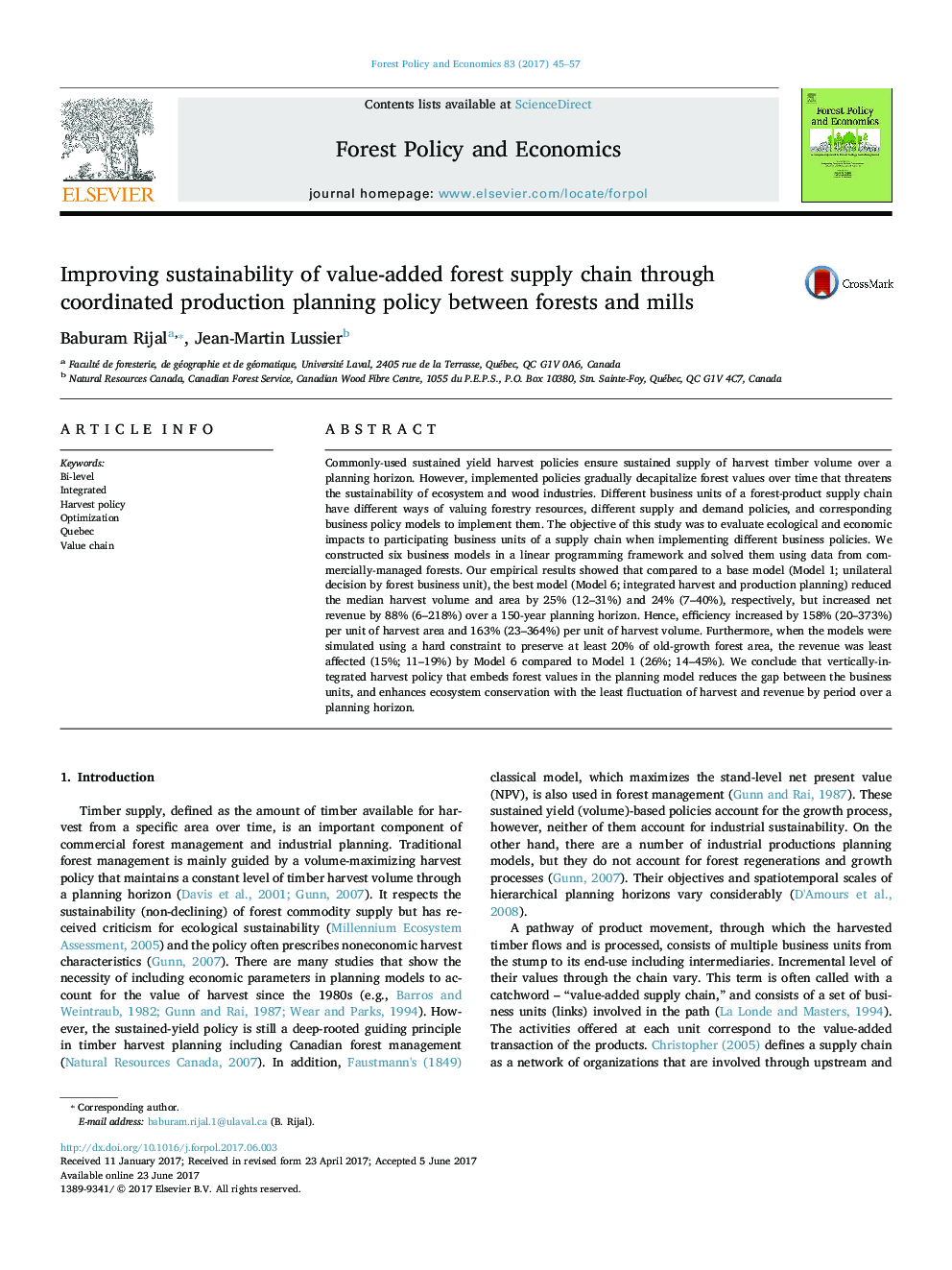| کد مقاله | کد نشریه | سال انتشار | مقاله انگلیسی | نسخه تمام متن |
|---|---|---|---|---|
| 6459667 | 1421656 | 2017 | 13 صفحه PDF | دانلود رایگان |
- Commercially-managed public forest requires ecological and economic sustainability.
- Business units of a value chain have different value systems for forestry resource.
- Gaps among the business units could be reduced by establishing a pay-off mechanism.
- Efficient harvestings imply high-value recovery, fewer harvesting and reduced cost.
- Vertically-integrated harvest policy can maximize the benefits to the supply chain.
Commonly-used sustained yield harvest policies ensure sustained supply of harvest timber volume over a planning horizon. However, implemented policies gradually decapitalize forest values over time that threatens the sustainability of ecosystem and wood industries. Different business units of a forest-product supply chain have different ways of valuing forestry resources, different supply and demand policies, and corresponding business policy models to implement them. The objective of this study was to evaluate ecological and economic impacts to participating business units of a supply chain when implementing different business policies. We constructed six business models in a linear programming framework and solved them using data from commercially-managed forests. Our empirical results showed that compared to a base model (Model 1; unilateral decision by forest business unit), the best model (Model 6; integrated harvest and production planning) reduced the median harvest volume and area by 25% (12-31%) and 24% (7-40%), respectively, but increased net revenue by 88% (6-218%) over a 150-year planning horizon. Hence, efficiency increased by 158% (20-373%) per unit of harvest area and 163% (23-364%) per unit of harvest volume. Furthermore, when the models were simulated using a hard constraint to preserve at least 20% of old-growth forest area, the revenue was least affected (15%; 11-19%) by Model 6 compared to Model 1 (26%; 14-45%). We conclude that vertically-integrated harvest policy that embeds forest values in the planning model reduces the gap between the business units, and enhances ecosystem conservation with the least fluctuation of harvest and revenue by period over a planning horizon.
Journal: Forest Policy and Economics - Volume 83, October 2017, Pages 45-57
